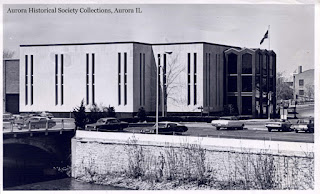Did you know?
They may not be alive in the scientific sense, but I do believe that buildings can possess a life, gleaned from the generations of people who use them.
In Japan I always felt a kind of breathless wonder when I stood in front of or inside the temples and shrines that often predated my country of birth by hundreds and hundreds of years. I imagined the people who had once stood where I was, looking at what I was seeing.
The short, mortal lives of humans prevent us from truly touching the lives of those who came far before us, but what humans leave behind--buildings and structures of where we worked and lived--might be the next best thing.
After Japan, nearly all the buildings dubbed "historic" here in the United States are almost laughably young. And after living in Kyoto where we were able to eat soba in a 1000 year old restaurant, a building erected in 1850 doesn't seem all that old.
However, it is not all about the age of the building of course, but about what happened inside that building.
For example.
My friend Sue, like us transplanted to Illinois from Japan and, like me, besotted with books, took me recently on a quest to visit several libraries in small, nearby towns.
Around lunchtime we stopped in Aurora, Il, where she brought me to the front doors of a closed library building. The dignified black marble sign outside clearly said "Aurora Public Library", but its doors were locked, and the tall windows were covered in dust.
It turns out that the Aurora Public Library had outgrown its home, and had been moved 3 blocks away into a gleaming new state-of-the-art building.
So this morning I got up early and drove back to Aurora by myself. This fall morning was as if it were programmed into perfection--clear blue sky, slight chill to the air, bright sunshine. As I drove up and parked the car, the old library building seemed almost pensive. It rested, quiet and heavy, on its bit of land overlooking the Fox River.
A smiling librarian opened the doors promptly at 9am, her fingers deftly twisting the keys in the lock with a familiarity that bespoke her years working in this building. I and a handful of fellow early birds wandered through the doors.
Now, I know not everyone loves books and libraries as I do. But I think most people--even those not enamored of books--would've sensed the wrongness of the empty space.
No books.
No paintings on the walls.
No murmurs of patrons or chatter of children drifting up from the Children's Area. No sound of footsteps on the marble stairs.
The quiet was too quiet even for a library.
I pondered the massiveness of the bookshelves, the heavy wooden study desks, the jumble of sturdy wooden chairs. Without books or people everything seemed unnaturally large and terribly lost.
Perhaps what I disliked most were the massive counters that stood at the entrance to every floor--tall, marble topped counters behind which librarians used to sit, answering questions, directing patrons, checking out books.
I wondered about this library. Outside and inside it seemed fairly modern, while many of the buildings around it were quite old (for the U.S.) A little research on my part revealed this building had grown and changed over the years just as much as any living thing, for beneath its smooth, modern limestone exterior and elegant black windows, it hid what it once was--
A brick and marble, Carnegie-funded beauty of a building that had originally opened in 1904. However it didn't take too long for the library to start outgrowing itself. Annexes were added as needed. Then in 1969 another renovation happened, resulting in a rather surprising face-lift:
My curiosity satisfied, I explored the library from the top floor to the basement. I knew that most of the furniture I passed would likely end up in a landfill, or, in the case of the metal shelves, torn apart for scrap.
Then I found my piece of this library. In the very corner of the basement, beneath a massive pile of what appeared to be lost-and-found items, I unearthed a single metal library cart made out of welded steel and resting on industrial-strength wheels. It was heavy and ponderous and not terribly lovely, but I knew I had to try to buy it--although considering how much new carts like this cost (upwards of $300 or more), I had a feeling it was temporarily forgotten rather than for sale.
I found a librarian who followed me back down to the basement to assess my find. Along the way she told me about how various rooms had been used, how the floor-to-ceiling metal shelves on the upper floors were not only functional, but actually structural to the building. She pointed out where her office used to be, in a sunshine-filled corner near the front entrance.
We cleared the book cart together and wheeled it to where another librarian was totaling visitor purchases by hand on a paper receipt pad.
"That? 20 bucks. How's that?" She winked at me.
I said "That's perfect. I'll take it."
After adding a Van Gogh framed reproduction oil painting ($5) and a stray chalkboard ($5), I wrote a check for a total of $30 and wheeled my cart out to my car.
The librarians I spoke to today kept saying how they hoped someone would buy the old building and keep it alive. The librarian who totaled my purchases shrugged her shoulders and said,
"This building has no fire suppression and a lot of structural challenges for anyone who wants to renovate it. Still, we hope someone will see what we see in it."
I plan to drive by the old library now and then. I, too hope to one day see the doors open and people inside bustling about.
Keeping it alive.








No comments:
Post a Comment